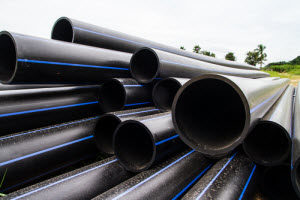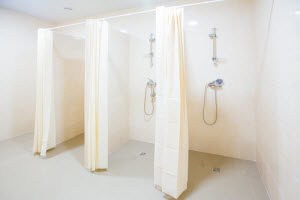Our collective future depends on sustainability. There are many factors that can help people embrace sustainability, whether it’s electric cars, LED lights, or even solar panels. The idea of becoming more sustainable has become increasingly popular, but not just as a growing fad, but as a way to help pave the way to a brighter future.
As a facility manager, you may have heard of different ways to make your facility more sustainable, but have you embraced them yet? We’re going to give you a few tips and tricks to help you learn more about sustainability. We’ll even show you ways that you can make your facility more sustainable and eco-friendly.
What is Sustainability & Why is it Important?
Sustainability essentially means that everything we need to survive, and thrive, as a society all depends on our natural environment. This means utilizing building and energy sources that can either be recycled or continuous. We’ve seen great strides with eco-friendly cars, low-energy devices, and even building materials. Sustainability is important because it helps society become self-reliant and it steers us away from utilizing materials that can be harmful to the environment.
Ways That Can Help You Make Your Facility More Sustainable
Whether you’re about to break ground and build a new facility, or you’re looking to renovate your current one, there are several ways that you can reduce your facility’s carbon output. Utilizing some of these methods and materials will not only help you make your facility greener, but you’ll also notice a reduction in overall costs and maintenance.
- Saving on Energy: There are several ways that you can reduce your facility’s energy A really effective way is by getting rid of any incandescent or fluorescent lights, and replacing them with more efficient ones like CFL or LED light bulbs. You can even invest in some solar panels to put on the roof, which will help you utilize clean energy while reducing your overall costs.
- Improve Your Recycling: Recycling is one of the backbones to sustainability, and ensuring that the proper things are being recycled helps the wheels of sustainability turn. This also includes replacing disposable items with more eco-friendly ones that can be easily recycled.
- Invest in HDPE: HDPE plastic is a strong and durable material that can have a variety of applications, including lockers, vanities, and bathroom partitions. This material is low maintenance, mold/mildew resistant, and best of all, 100% recyclable, containing roughly anywhere between 25-100% pre-consumer material.

- Going Green: There are plenty of ways that you can go green. This includes taking advantage of beautiful weather by opening the windows and turning off the air. You can also use green cleaning materials to reduce your use of harmful chemicals.
The Importance of Being Sustainable
Making your facility sustainable can have positive effects on the environment, your occupants’ outlook, and even your overhead costs. Sustainability not only helps you save money on your costs, but it can have a positive effect on the health of your occupants, and it even contributes to reducing harmful emissions that are detrimental to the environment.
Want to start taking the steps towards making your facility more sustainable? Download Sustainable Building Products: How to Make Your Facility Eco-Friendly from Top to Bottom, a free eBook from your friends at Scranton Products.



 One of the most efficient ways to reduce your facility’s carbon input is to either reduce your energy use (which is next to impossible) or find ways to use less energy. Any rooms that aren’t being occupied shouldn’t have any electrical equipment running. This includes computers, TVs, and even lights. However, if you don’t think you can run your facility in partial darkness, you may want to
One of the most efficient ways to reduce your facility’s carbon input is to either reduce your energy use (which is next to impossible) or find ways to use less energy. Any rooms that aren’t being occupied shouldn’t have any electrical equipment running. This includes computers, TVs, and even lights. However, if you don’t think you can run your facility in partial darkness, you may want to  If there’s a remodel or renovation project coming up in your facility, you should utilize
If there’s a remodel or renovation project coming up in your facility, you should utilize  It’s important to give your hallways a thorough cleaning before the school year begins. Most germs and bacteria are picked up through foot traffic, and more often than not, those germs end up in the hallways. Utilizing a strong disinfectant cleaner can help combat the spread of germs. However, there are green cleaning products on the market that can help you achieve germ removal and still keep harmful chemicals from contaminating the air.
It’s important to give your hallways a thorough cleaning before the school year begins. Most germs and bacteria are picked up through foot traffic, and more often than not, those germs end up in the hallways. Utilizing a strong disinfectant cleaner can help combat the spread of germs. However, there are green cleaning products on the market that can help you achieve germ removal and still keep harmful chemicals from contaminating the air. Be sure to check your air and water quality to see if it’s up to code. Find a water tester in the area to help you conduct these routine tests so you can see where the quality lies. If the result isn’t as high as you’d hoped, consider replacing the filtration system. When it comes to air, there are several ways that you can do your part increase the quality. Consider getting indoor plants, utilize
Be sure to check your air and water quality to see if it’s up to code. Find a water tester in the area to help you conduct these routine tests so you can see where the quality lies. If the result isn’t as high as you’d hoped, consider replacing the filtration system. When it comes to air, there are several ways that you can do your part increase the quality. Consider getting indoor plants, utilize  HDPE (high-density polyethylene) is a solid, strong plastic that has many applications when it comes to building materials. Some facility managers aren’t sure that HDPE provides a stronger construct than other plastics, but HDPE has been proven to be one of the more durable plastics on the market, making it a formidable opponent to other plastics that are available.
HDPE (high-density polyethylene) is a solid, strong plastic that has many applications when it comes to building materials. Some facility managers aren’t sure that HDPE provides a stronger construct than other plastics, but HDPE has been proven to be one of the more durable plastics on the market, making it a formidable opponent to other plastics that are available. Get started by looking for the question(s) that’s most relevant to you so you can learn the answer!
Get started by looking for the question(s) that’s most relevant to you so you can learn the answer! According to the Department of Justice ADA Title III regulations, there are four major priorities to follow to ensure that you’re following the law and ensuring that your facility is
According to the Department of Justice ADA Title III regulations, there are four major priorities to follow to ensure that you’re following the law and ensuring that your facility is